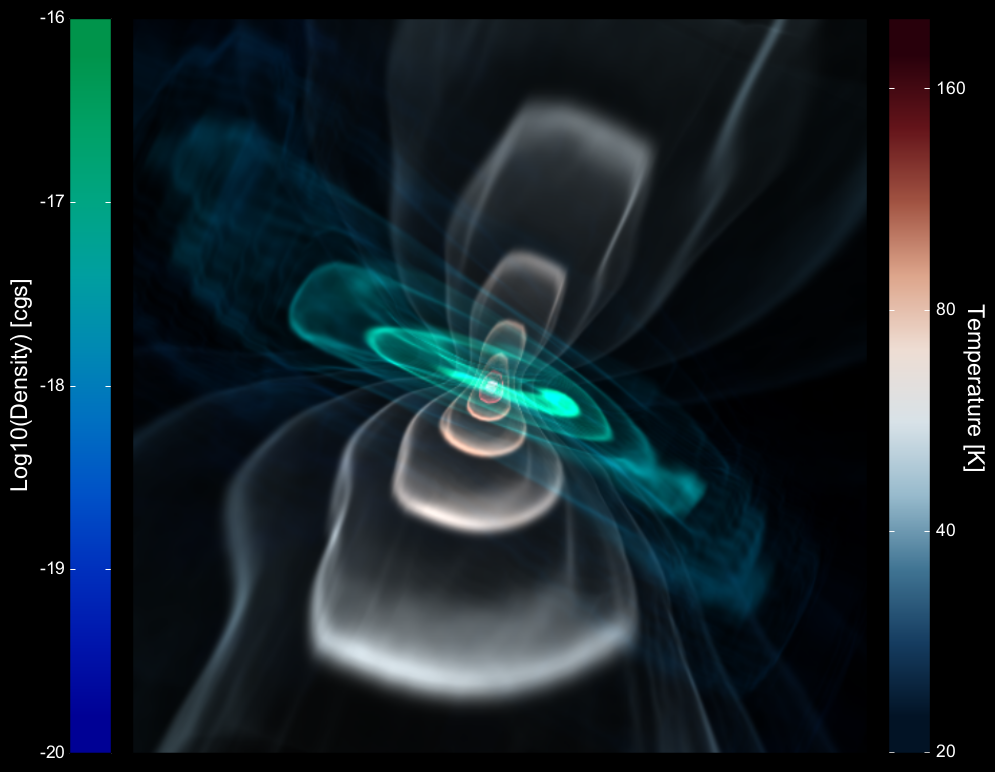

Thomas Robitaille
Understanding the formation of stars and planets can help us understand how our own Solar system came into existence. Our current picture of star formation is that turbulent motions and shocks in large interstellar clouds of gas (mainly molecular hydrogen and Helium) and dust (typically micron-sized carbonaceous and silicate-based grains) cause peaks to form in the density structure, which then become unstable to collapse under the influence of gravity. As the material collapses, a protostar forms and material then accretes onto it, mainly through an accretion disk. Later in time, as the accretion from the large-scale envelope of gas and dust slows down, planets may form in the disk surrounding the young star, before the disk itself disappears, typically after a few million years.
One way to gain further insight into these process is via numerical simulations. These typically start from a large cloud of gas and dust, and follow the evolution of the cloud under the influence of various physical processes such as gravity, pressure, radiation, and so on. This visualization shows an example of a star that has just started to form in such a simulation. The density structure highlighted in blue to green iso-contours shows that an accretion disk has already formed. Using the density structure and the properties of the forming star, I used Hyperion, a Python and Fortran Monte-Carlo radiative transfer code to compute the heating of the material, and derive the temperature structure. Because the disk provides a shield for the radiation, the temperature is highest along two ‘lobes’ that are perpendicular to the disk. An animated fly-around can be viewed here.
The visualization of the density and temperature was done using yt, a Python package that can produce state-of-the-art volume renderings, and the images for the density and temperature were then combined in Python, before being plotted with Matplotlib along with two colorbars. The star formation simulation used as input for the density structure was computed by Dr. Stella Offner (Yale).